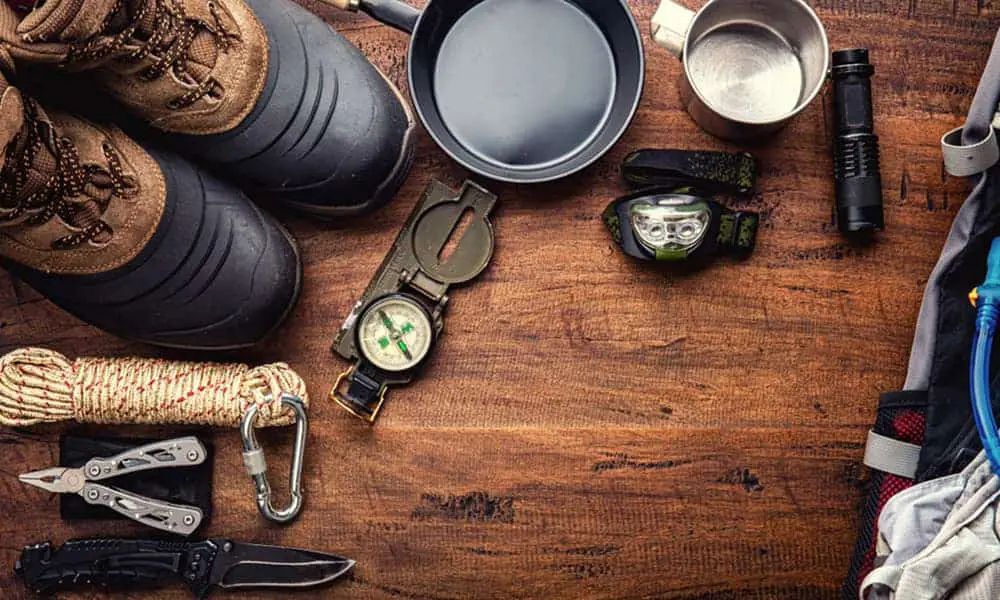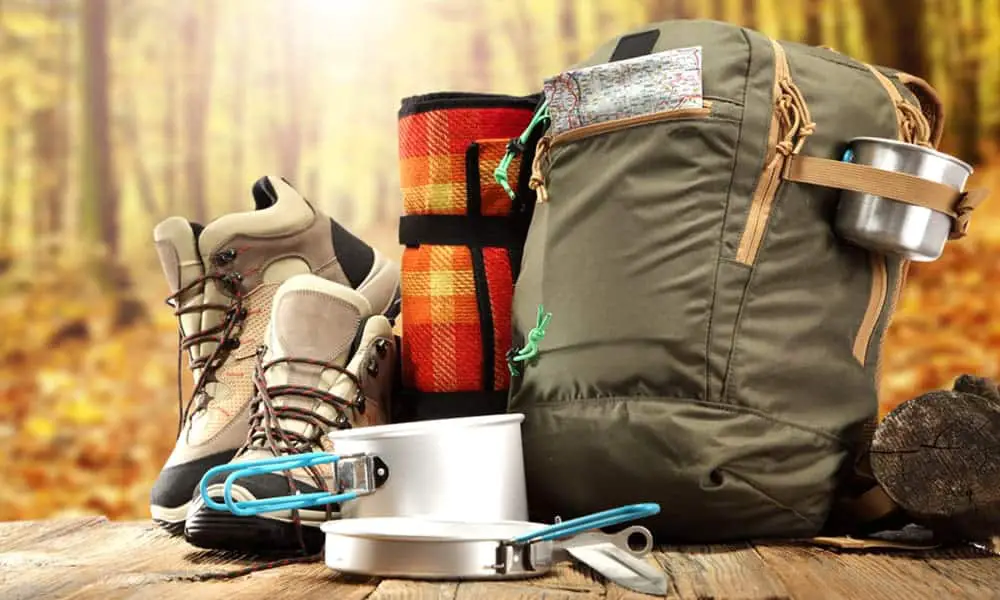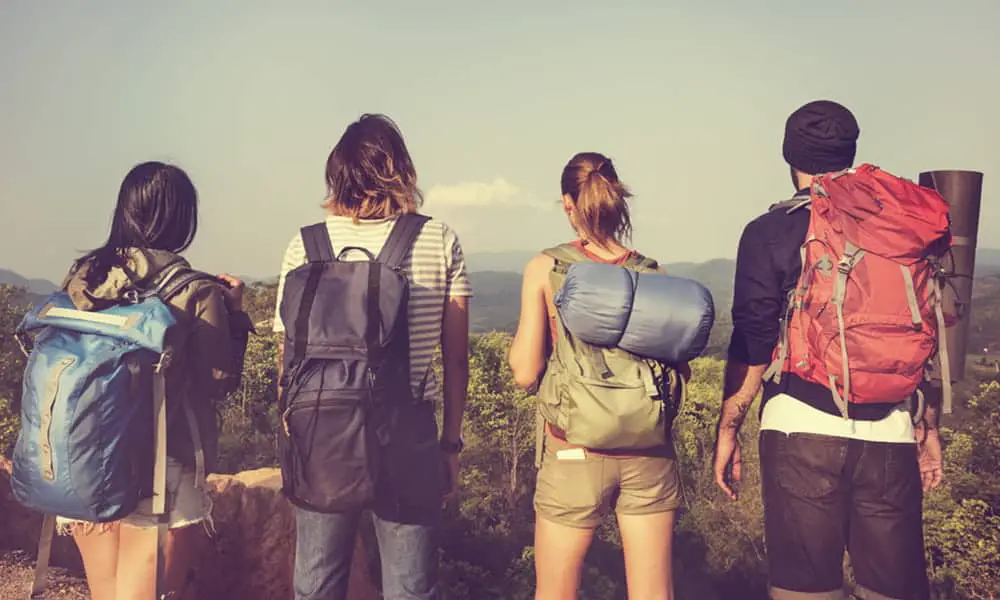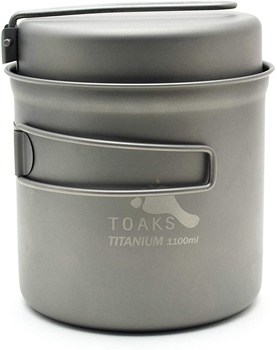Backpacking is a delicate balance. You want to bring enough supplies to be comfortable, but you also don’t want your pack to weigh you down. This trade-off might be the single most important one in backpacking, and it’s a consideration that every trekker has to do in preparation for their adventure.
In this article, we’re examining this trade-off. We’ll look at how much weight you should aim to bring and methods of organizing/minimizing your supplies to lessen your total pack weight. It can be a frustrating task at times, but you’ll be glad you put so much thought into it!
Weight Ratio – Backpack to Your Body Weight
There are many ways to settle on the ideal weight for your backpacking trip. Among the most popular methods is using a ratio to your body weight.
The ratio represents that your backpack’s weight will be a certain percentage of your overall body weight. Some important considerations may change the ratio (which we’ll examine below), but this is a good place to start.
The ratio differs slightly depending on who you ask, but most hikers seem to settle within the 15-25% range (with many falling right at 20%). This means that the weight of your backpack should be 15-25% of your overall body weight. For example, if you weigh 200 pounds, your backpack should weigh about 40 pounds.
Of course, there are quite a few things that can influence this ratio. In the next section, we’ll look at all the additional considerations that might be more important than this simple number.
The ratio might vary depending on:
Your Size
Yes, we just finished telling you that the ratio depends on your overall size, which is true, but it’s also true that this is just a starting point. Everyone is built differently, and we know that your overall body weight isn’t necessarily a 1:1 indicator of your ability to carry more gear.
For example, taller people won’t automatically be stronger as a result. The same goes for shorter people and can also be applied to any difference in body composition.
For these reasons, it’s just important to consider this ratio as a preliminary consideration and then account for your individual preferences.
Your Backpack’s Design
The design of your backpack also makes a massive difference in how much you can comfortably carry. Simply put, an effective trekking backpack is an absolute necessity if you plan on seriously pursuing this passion.
These backpacks effectively spread the load across your body, allowing you to efficiently support a much greater load using their effective strapping and design. They aren’t your average backpack, which any hiker with experience using them knows.
As a result, if you get a more effective backpack, you can carry heavier loads with ease. It’s worth checking out your options and going with a more premium bag. A backpack isn’t an area we’d recommend “cheaping out”.
Comfort vs. Portability
Comfort and portability will always be important considerations in backpacking. The all-important trade-off of comfort vs. portability. Do you want to bring more stuff which will make you more comfortable? Or do you want to minimize your pack weight and sacrifice certain things in the process?
It’s going to come down to a subjective decision. Some backpackers don’t mind a little extra weight because they know it will make their overall experience easier & more comfortable. Other backpackers borderline obsess over their pack-load and take great pride in packing the bare minimum they need to get by. There are no wrong answers, but you need to find what works for you.
Time of Year/Length of Trip
The time & length of your hike might make a heavier load essential. For example, if you’re going on a longer trip, you’ll need to pack more. You’ll need more food, water, and supplies, leading to a heavy pack. There is no getting around that.
The same can be said if you are camping at a colder time of year. You’ll need to pack cold-weather clothing and gear (sleeping bag, tent, etc.). This gear needs to be more insulated, which also makes it heavier.
The good news is that, as your trip goes on, you use your consumables (food, water, toiletries), and your pack gets lighter!
How Do I Pack Lighter?

Now that we’ve examined an ideal weight ratio and the considerations that may change that ratio, let’s get into some practical advice.
If there’s one true thing, it’s that you’ll always want to lighten your load if it doesn’t require sacrificing effectiveness. In this section, we’re giving you practical tips for planning and organizing your backpack load and perfectly meet your needs throughout your excursion.
Tips for Packing Lighter
Weigh Your Essentials (Base Gear)
No matter the trip, there’s going to be a set of gear that you need to bring, including backpacking essentials such as your tent, sleeping pad, water bottle, cookware, clothing, boots, trekking pole, GPS, tools, etc. The exact nature of these essentials will differ depending on the type of backpacking you do, but it will be a common theme that links your trips together.
You should know what these essentials weigh. Knowing the weight of your base gear gives you a good reference point. It’s also a load off your mind, and you redirect your focus to the weight of any consumables you’ll be bringing on the trip. It’s a great starting point and significantly shortens your planning for each trip while helping avoid heavy pack.
Most serious backpackers will aim for a “base weight” of around 20 pounds (with variation in either direction).
Buy Lighter Gear
As gear evolves and as you invest more time and money into your backpacking passion, you’ll probably be interested in lightening your load. As time goes on, you can focus on buying lighter, more efficient supplies, which will lighten your overall load or give you more space for consumables and luxury items.
You’d be surprised at how efficient and innovative certain camping supplies can be. No matter which equipment you direct your focus on, there’s likely a lightweight option, and there’s likely an ultra-lightweight option. For example, camping cookware has a lightweight and compact aluminum design; but serious backpackers might even step it up to the ultralight titanium equipment.
Of course, the main trade-off here is price. Generally speaking, the more lightweight the supplies become, the more they cost, which is why you might want to gradually purchase this equipment and buy it in response to your needs. It would be a big investment to splurge for top-quality lightweight gear or ultralight gear all at once.
Lightweight Options
As we noted above, buying lightweight gear is an important step to decreasing your overall load. But sometimes it’s tough to know where to start.
There are lightweight options for just about every camping supply you can think of. Here’s what you should look for in some of the more popular equipment:
Cookware: One of the major ways you can save weight in your backpack is through lightweight cookware. There are many options for lightweight cookware, so you have to know where to look. First, get cookware made from lightweight materials. Popular lightweight cookware uses aluminum, but an even lighter option is titanium. Titanium is considered the most lightweight camp cookware available, but it’s also quite expensive.
With camping cookware, you’ll also want to consider how small and compact it is. Many cookware sets nest within one another, maximising the space available and allowing you to fit more equipment into your bag.
Sleeping Bag: Another weight (and space) saving opportunity is buying a lightweight sleeping bag. With a sleeping bag, you want a lightweight option that is still warm enough to keep you comfortable in the conditions in which you are camping. For this, you’ll want to look at the “temperature rating” of the sleeping bag, which represents the lowest temperature it is rated to withstand.
The most effective lightweight sleeping material is down. Down has the most efficient weight-to-temperature rating ratio. In other words, lighter down bags will be warmer than bags made of other materials. Down is also able to pack down compactly, fitting into smaller carrying bags. But as is the case with efficient backpacking supplies, down sleeping bags also tend to be more expensive.
Tent: And finally, you can save weight with a lightweight tent. Since a tent is one of the biggest supplies you’ll pack, there are major opportunities to cut down on your overall load.
The weight of a tent depends on the size, shape, and materials. Many backpackers prefer to buy a tent that is just big enough to sleep comfortably. They will also buy a tent made from lightweight materials – such as aluminum tent poles, lightweight nylon fabric, and more. Lightweight tents tend to utilize more mesh material, but this is only an option in warmer areas.
Plan, Plan, Plan
One of the most important techniques you can utilize for more efficient packing is extensive and accurate planning. It may seem like a lot of work upfront (and it is), but you’ll be saving yourself a (potential) massive problem down the road.
When it comes to planning for a backpacking trip, it helps to plan day-by-day. Break up your days into blocks, and consider what you need for each block, which is effective to plan for meals, clothes, and other supplies, all of which have their considerations:
Plan Meals: First up, we’ve got meals. Meal planning can be one of the most important parts of backpacking. You want to pack enough to meet your needs (obviously), but also not too much that you overburden your pack.
You need to allocate space for each meal and make sure you have the supplies in your pack, ensuring that you’ll have enough without having too much. Many backpackers also give themselves some “buffer” foods and snacks, just in case they get extra hungry throughout the trip.
You want to focus on packing calorically dense, nutritious foods that don’t spoil easily. These foods effectively keep you energized without weighing down your pack too much. Examples include nuts, jerky, oats, eggs (powdered), peanut butter, protein bars, etc.
And, of course, don’t forget your water (and coffee)!
Plan Clothes: Planning your clothes requires a similar set of considerations, but it’s not as complicated as planning your meals. Many backpackers will tell you that you only need one of each type of clothes. Well, maybe pack multiple underwear and socks.
You want to make sure you have a pair of clothes to suit each condition you expect to face, like temperature, precipitation, rivers, streams, etc. Know the route you are going to take, and give yourself an option for any potential condition. You must pack gear that is warm enough. If in doubt, aim for gear rated for a lower temperature than you expect to face on your trip.
Plan Miscellaneous: And, finally, we have miscellaneous items. Items such as toiletries, toothpaste, waste bags, etc. Consider your requirements for all of these miscellaneous disposables, and only pack as much as you need. You can get many of this equipment in handy “travel sizes”.
As you can see, we’re serious about planning. These might seem like trivial things to worry about, but you’d be surprised how quickly space in your pack fills up! Extensive planning for a backpacking trip is an effective way to save space and weight in your bag and ensure you have a comfortable, enjoyable trip!
Think of How You Will Use Items

If you’re ever struggling in deciding what to pack, consider how you might use each item you pack. Many backpackers find it useful to pack for their trip based on usage. If you can’t foresee something ever serving a purpose, then don’t pack it.
This is more of a general tip, but it’s a good philosophy to keep in the back of your mind while you pack.
When It’s All Packed – Make List for Next Time
Once you’ve packed everything into your backpack, it can be helpful to make a list of what you packed. Note everything you took, and you can use this list as a reference for next time (provided it’s a similar trip).
Keep this note, and make adjustments once you get back from your trip. Note what you needed, what you didn’t use, and what you could have used more of. After a few trips, you’ll have constructed a perfect list to use as a reference.
Experienced backpackers know exactly what to put in their bags, but it depends on their preferences. With effective planning and careful recording, you can get there too!
Putting it All Together – Our Top Tip
In this article, we’ve examined many ideas for packing the perfect backpack for your next excursion. We’ve focused on lightweight materials, planning techniques, and everything you need to know to pack the perfect backpack.
Ultimately, you need to pack what you’re comfortable with. Tips & tricks are great, but you don’t learn your preferences until you try them yourself. So before you go through our guide, be sure to keep your preferences in mind. Sit down, and think about how you will be backpacking. Consider the conditions, length of the trip, and any specific considerations that will affect what you need to pack. Once you’ve considered your own needs and requirements, go through our guide to see how you can maximize your packing efficiency, and cut down on your pack load wherever possible. Some backpackers prefer to pack more comfortable accessories and equipment, while some backpackers go for the lightest load possible. Your preferences might fall somewhere in the middle. There are no wrong answers, but you need to find out what works for you!






